
The Vibrant Heart of Berlin: Kreuzberg
Discover Kreuzberg: Berlin's eclectic district known for its multicultural cuisine, vibrant street art, and legendary nightlife, offering a unique blend of history and modernity.
Kreuzberg, a dynamic district in Berlin, is known for its rich cultural tapestry, vibrant street art, and lively nightlife. This area has a storied past, having transformed from a working-class neighborhood to one of the city's most eclectic and thriving quarters. Wander through the streets and you'll find an array of multicultural eateries, offering everything from Turkish kebabs to vegan delights. The famous Markthalle Neun is a must-visit for food lovers, hosting weekly markets and street food events that attract locals and tourists alike. Kreuzberg's culinary scene is a melting pot, reflecting the diverse community that calls this neighborhood home. Art enthusiasts will be captivated by the area's street art, with murals and graffiti adorning many buildings. The East Side Gallery, a preserved section of the Berlin Wall, is a significant landmark showcasing politically charged artwork. For a deeper dive into the local art scene, explore the numerous galleries and studios scattered throughout the district. Kreuzberg is also a green oasis in the city, with parks such as Görlitzer Park and Viktoriapark offering serene spots to relax. The Landwehr Canal, which runs through the neighborhood, is perfect for a leisurely stroll or bike ride, especially on sunny days. Nightlife in Kreuzberg is legendary, with a plethora of bars, clubs, and music venues. From laid-back beer gardens to pulsating nightclubs, there's something for everyone. The district's nightlife is as diverse as its daytime offerings, ensuring that visitors can experience the true essence of Berlin's vibrant spirit.
Local tips in Kreuzberg
- Visit Markthalle Neun on Thursdays for the Street Food Thursday event.
- Explore the East Side Gallery early in the morning to avoid crowds.
- Rent a bike to explore the neighborhood and its many parks.
- Check out local listings for live music events and pop-up art exhibitions.
- Try the Turkish markets on Maybachufer for unique souvenirs and delicious snacks.
The Vibrant Heart of Berlin: Kreuzberg
Kreuzberg, a dynamic district in Berlin, is known for its rich cultural tapestry, vibrant street art, and lively nightlife. This area has a storied past, having transformed from a working-class neighborhood to one of the city's most eclectic and thriving quarters. Wander through the streets and you'll find an array of multicultural eateries, offering everything from Turkish kebabs to vegan delights. The famous Markthalle Neun is a must-visit for food lovers, hosting weekly markets and street food events that attract locals and tourists alike. Kreuzberg's culinary scene is a melting pot, reflecting the diverse community that calls this neighborhood home. Art enthusiasts will be captivated by the area's street art, with murals and graffiti adorning many buildings. The East Side Gallery, a preserved section of the Berlin Wall, is a significant landmark showcasing politically charged artwork. For a deeper dive into the local art scene, explore the numerous galleries and studios scattered throughout the district. Kreuzberg is also a green oasis in the city, with parks such as Görlitzer Park and Viktoriapark offering serene spots to relax. The Landwehr Canal, which runs through the neighborhood, is perfect for a leisurely stroll or bike ride, especially on sunny days. Nightlife in Kreuzberg is legendary, with a plethora of bars, clubs, and music venues. From laid-back beer gardens to pulsating nightclubs, there's something for everyone. The district's nightlife is as diverse as its daytime offerings, ensuring that visitors can experience the true essence of Berlin's vibrant spirit.
Iconic landmarks you can’t miss
East Side Gallery
Explore the East Side Gallery in Berlin: a stunning open-air gallery on the Berlin Wall showcasing powerful murals celebrating freedom and unity.
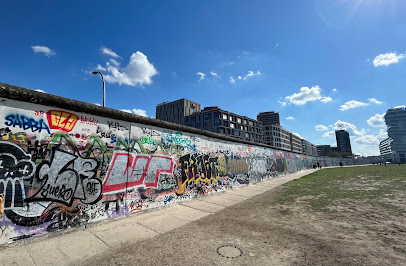
Viktoriapark
Discover the serene beauty of Viktoriapark in Berlin, where lush landscapes, stunning views, and historical monuments create a perfect urban retreat.
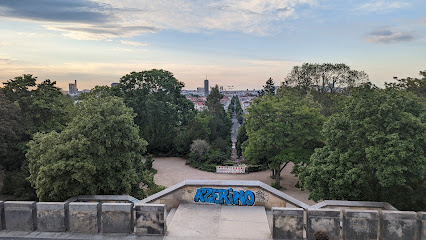
Prussian Monument for the Liberation Wars
Visit the Prussian Monument for the Liberation Wars in Berlin's Viktoriapark for a blend of history, stunning views, and natural beauty.

Peace Column
Explore Berlin's Peace Column, a stunning monument symbolizing unity and harmony in the heart of Friedrichshain-Kreuzberg.

Süße Sünde Mural
Discover the vibrant artistry of Süße Sünder Mural in Berlin, a colorful highlight in the heart of Friedrichshain-Kreuzberg's street art scene.
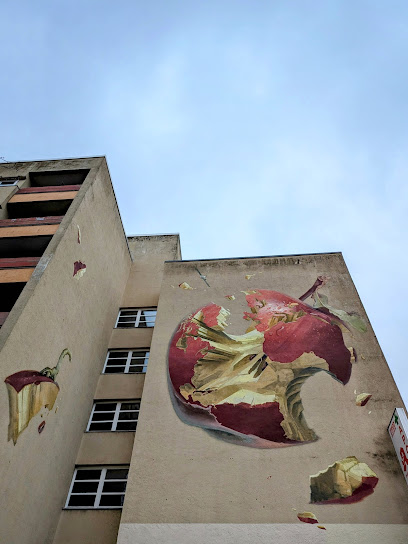
Kreuzberg Pavillon
Discover the Kreuzberg Pavillon, a vibrant cultural center in Berlin that celebrates art, community, and creativity.
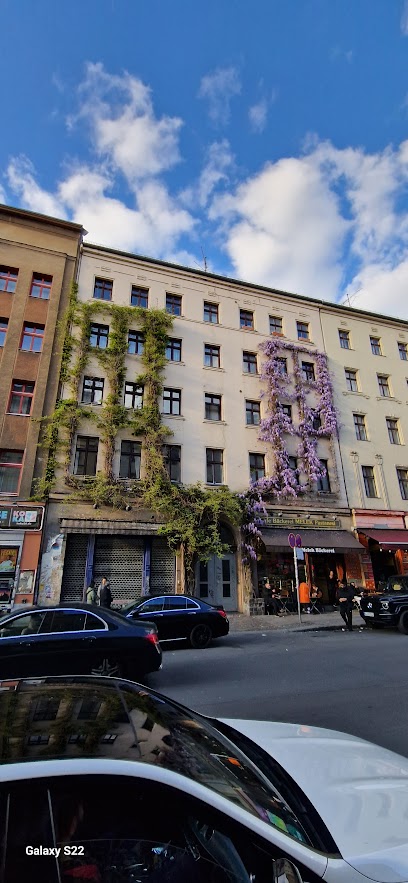
Mural by Herakut
Experience the vibrant creativity of Herakut's mural in Berlin, a captivating blend of street art that tells powerful stories.
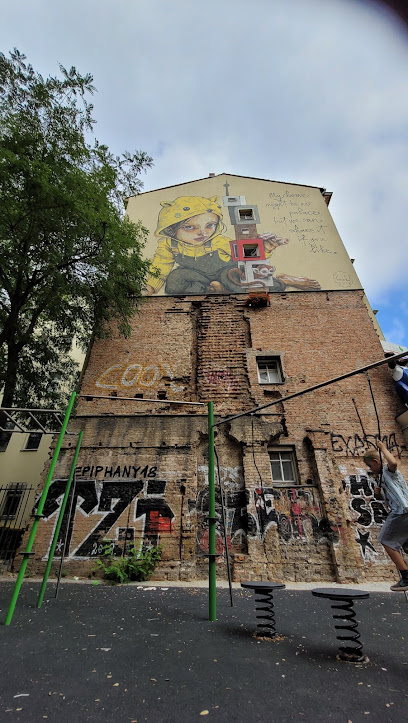
Die Farnmauer
Experience the serene beauty of Die Farnmauer, a unique tourist attraction in Berlin’s Friedrichshain-Kreuzberg, blending nature and urban artistry.
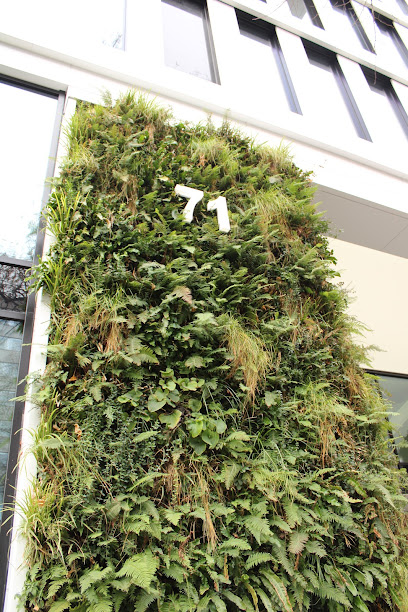
Daphne & Apollo Mural
Discover the Daphne & Apollo Mural in Berlin, a stunning blend of mythology and street art that captures the city's vibrant culture and creativity.
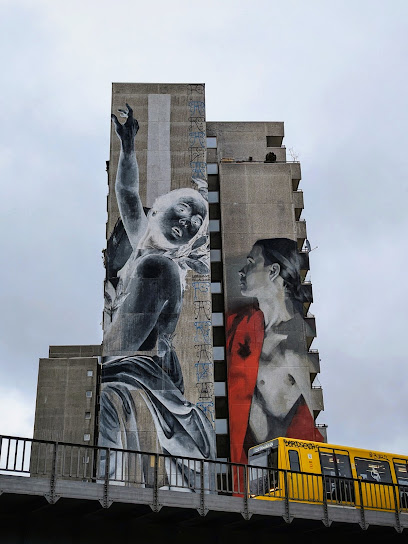
Mural by Aryz
Discover the captivating mural by Aryz in Berlin's vibrant Friedrichshain-Kreuzberg district, a masterpiece of urban creativity and culture.
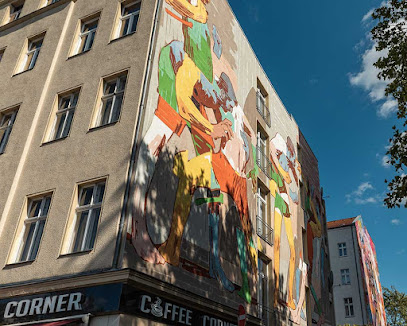
Unmissable attractions to see
Checkpoint Charlie
Discover the iconic Checkpoint Charlie in Berlin, a symbol of the city's divided past, with rich history, engaging exhibits, and unforgettable stories.
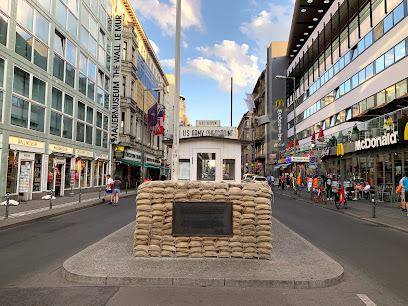
East Side Gallery
Discover the East Side Gallery: an iconic outdoor art gallery on the Berlin Wall, blending history, creativity, and cultural expression in vibrant murals.
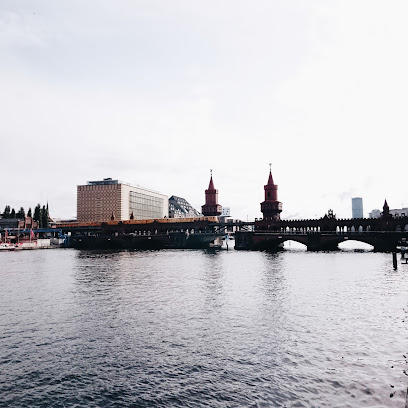
Memorial to the Murdered Jews of Europe
Explore the profound significance of the Memorial to the Murdered Jews of Europe, a poignant tribute to Holocaust victims in the heart of Berlin.
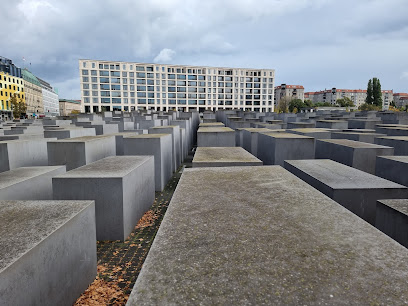
Viktoriapark
Explore the lush landscapes of Viktoriapark in Berlin, a serene city park featuring a waterfall and stunning views, perfect for relaxation and exploration.
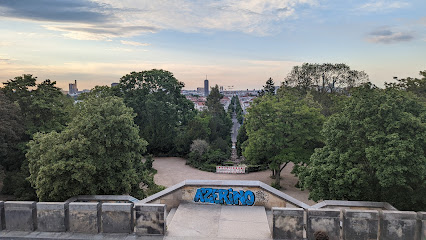
Berlin Street Art Tours
Discover the artistic pulse of Berlin with immersive street art tours showcasing murals, graffiti, and hidden urban gems.

The Yellow Man (Os Gemeos)
Discover The Yellow Man by Os Gemeos, a vibrant street art masterpiece in Berlin's Friedrichshain-Kreuzberg, reflecting the city's dynamic culture.
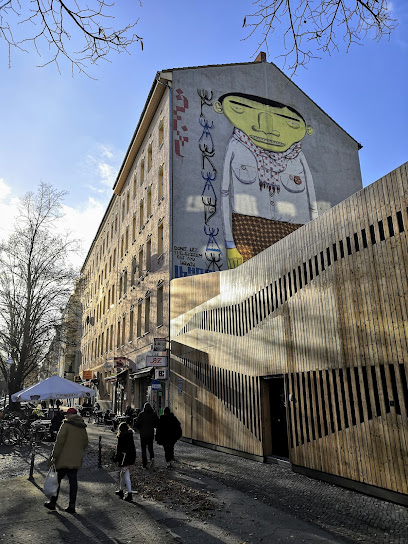
Kohl Bush Gorbachev Monument
Explore the Kohl Bush Gorbachev Monument in Berlin - a powerful tribute to peace and unity in a historic setting.
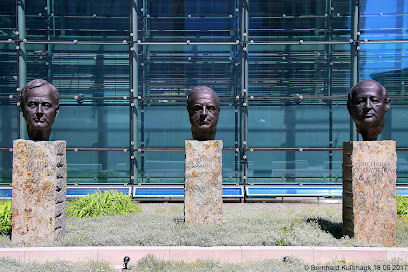
Mural
Experience the vibrant artistry of Berlin's Mural, a stunning expression of street art and culture in the heart of the city.
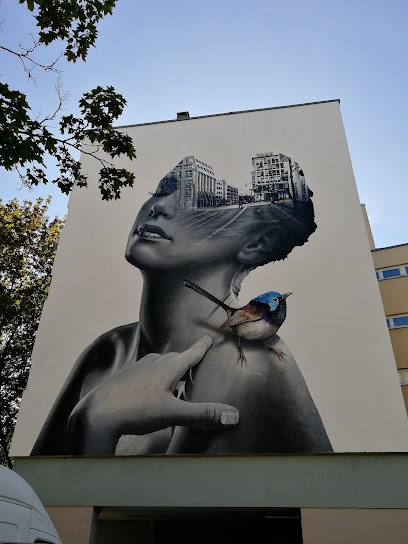
Mural by Aryz
Discover the captivating Mural by Aryz in Berlin's Friedrichshain-Kreuzberg, a colorful testament to the city's dynamic street art scene and creativity.

Cosmonaut Mural
Discover the mesmerizing Cosmonaut Mural in Berlin's Friedrichshain-Kreuzberg, a vibrant tribute to space exploration and urban art.
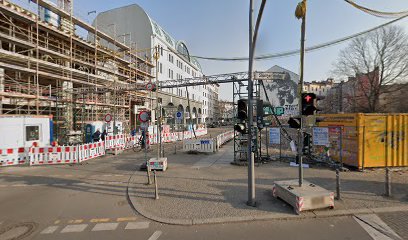
Essential places to dine
Burgermeister Schlesisches Tor
Discover Burgermeister Schlesisches Tor: Where iconic burgers meet Berlin's vibrant street food culture under the U-Bahn.

AMRIT - Berlin Kreuzberg
Discover authentic Indian flavors at AMRIT - Berlin Kreuzberg, where every dish tells a story of tradition and spice.
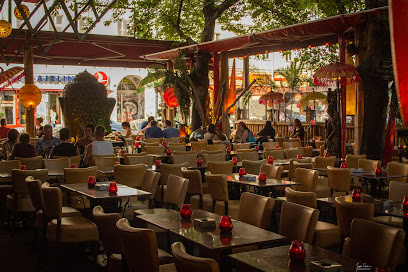
Umami
Discover Berlin's Umami: A must-visit Asian restaurant offering vibrant flavors and exceptional dining experiences in Friedrichshain-Kreuzberg.
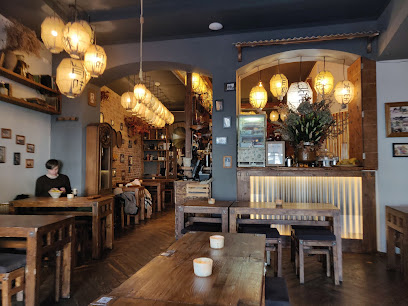
Max und Moritz
Discover Max und Moritz: A culinary gem in Berlin offering authentic German dishes and a cozy atmosphere perfect for all occasions.
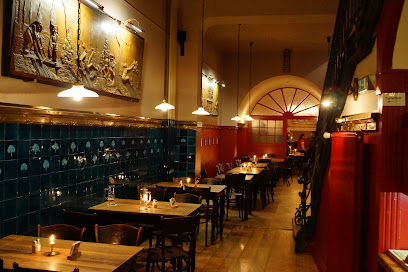
3 Sisters
Discover the heart of Berlin's culinary scene at 3 Sisters - where European flavors meet a vibrant beer garden ambiance.
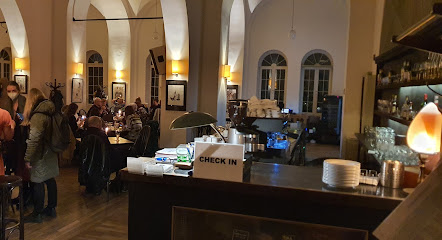
Spindler
Discover the exquisite flavors of modern French cuisine at Spindler, Berlin's premier bistro and steakhouse along Paul-Lincke-Ufer.
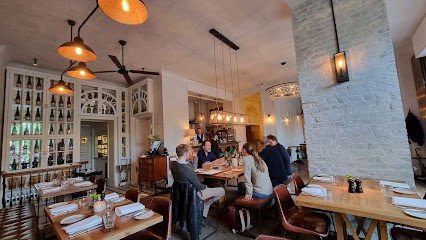
Rutz Zollhaus
Discover Rutz Zollhaus in Berlin: Where Tradition Meets Innovation in German Cuisine
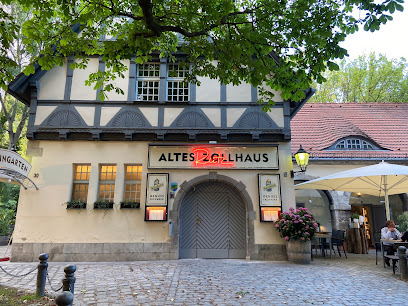
Restaurant VOLT
Experience exquisite German cuisine at Restaurant VOLT, where tradition meets innovation along Berlin's scenic Paul-Lincke-Ufer.
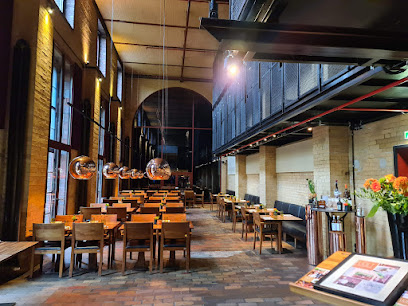
Horváth
Discover culinary artistry at Horváth in Berlin - where fine dining meets innovative European and vegetarian cuisine.
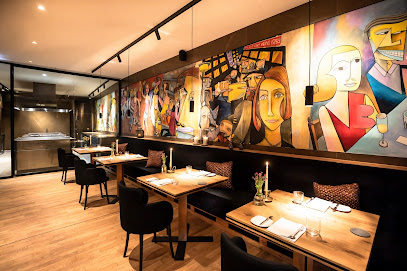
Lila restaurant
Discover Lila Restaurant in Berlin: A unique dining experience by the canal featuring fresh flavors and vibrant atmosphere.
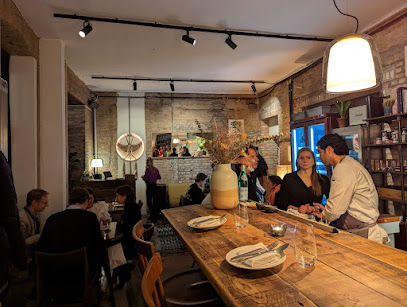
Markets, malls and hidden boutiques
Voo Store
Discover Voo Store in Berlin: the perfect fusion of trendy fashion and artisanal coffee in a vibrant atmosphere.
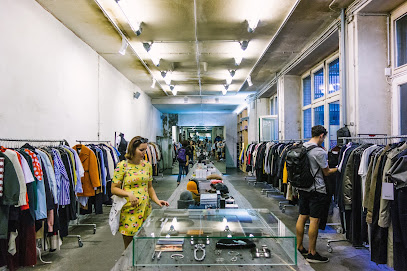
PICKNWEIGHT - VINTAGE KILO STORE
Explore Berlin's premier vintage kilo store for unique clothing finds, where fashion meets sustainability in a fun shopping experience.
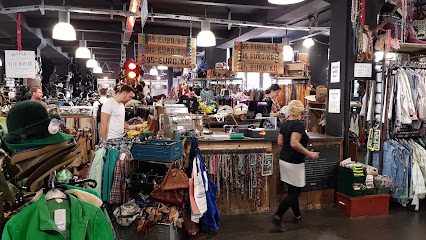
CALYPT Store
Explore the unique vintage clothing selection at CALYPT Store, a hidden gem in Berlin's Friedrichshain-Kreuzberg district, perfect for fashion enthusiasts.
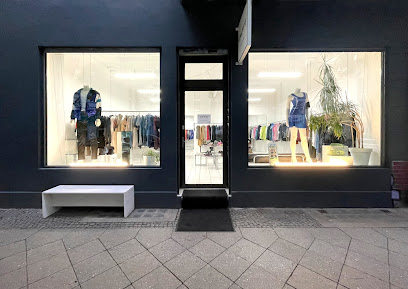
halleluja.berlin | Inhaber: Karasu & Wohlleber GbR
Discover unique vintage treasures at Halleluja Berlin, where eco-friendly fashion meets eclectic style in the heart of the city.
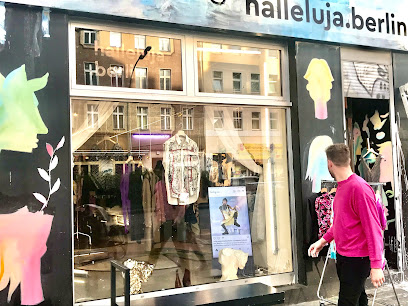
homage store I Ethical Concept Store
Explore the Homage Store in Berlin for unique, ethically-sourced gifts and clothing that celebrate local craftsmanship and sustainability.
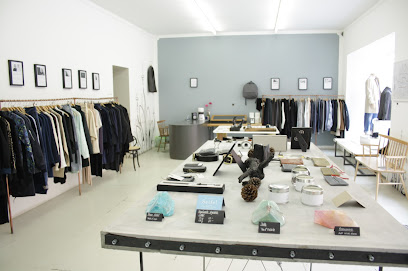
Kims Second Hand Boutique
Explore Kims Second Hand Boutique in Berlin for a unique mix of vintage clothing and sustainable fashion treasures.
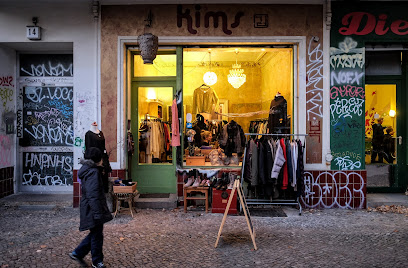
For Kings and Queens
Explore the eclectic charm of For Kings and Queens, Berlin's premier vintage clothing store nestled in the heart of vibrant Kreuzberg.
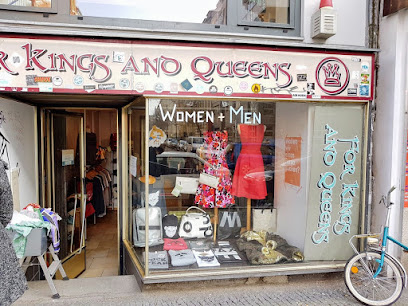
tHERAPY Recycle and Exorcise - Unique genderless circular fashion
Explore sustainable, genderless fashion and eco-friendly services at tHERAPY in Berlin's creative hub.
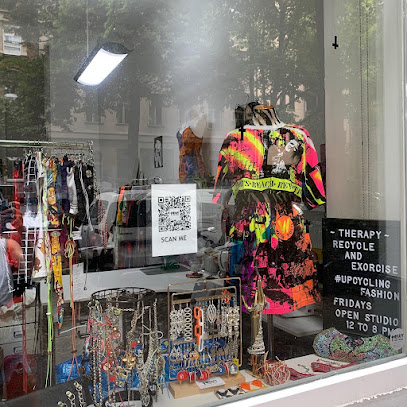
Kashmir Boutique
Discover the charm of Kashmir Boutique in Berlin, where exquisite textiles and handcrafted goods celebrate the rich heritage of Kashmir.
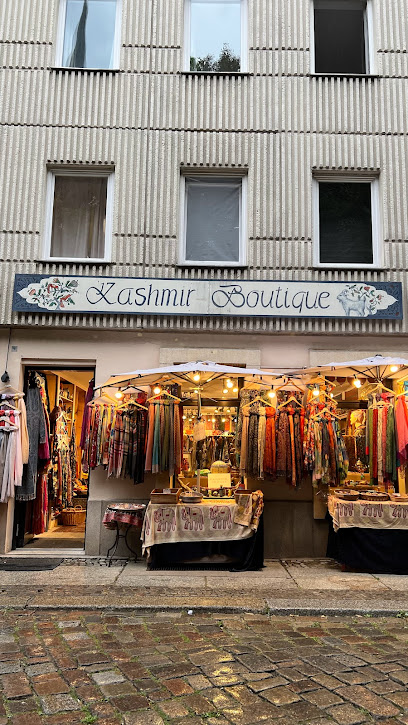
mijas: a shop of things
Explore Mijas, a unique gift shop in Berlin, offering handmade treasures and creative workshops for an unforgettable shopping experience.
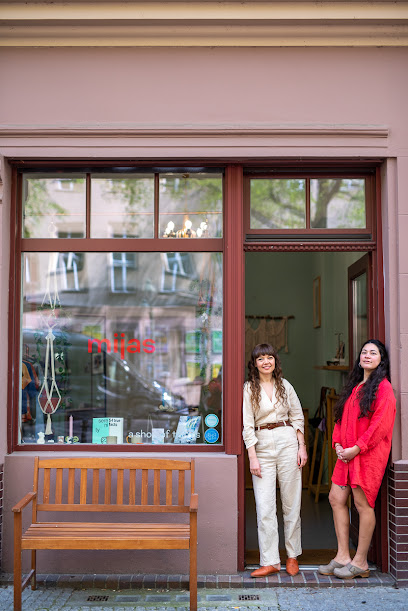
Essential bars & hidden hideouts
Clash
Discover the vibrant nightlife at Clash in Berlin, where affordable drinks and great music create the perfect pub experience.
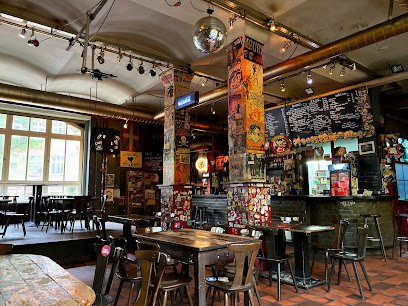
Bar39
Experience the vibrant nightlife of Kreuzberg at Bar39, where innovative cocktails meet a lively atmosphere, perfect for every night out in Berlin.
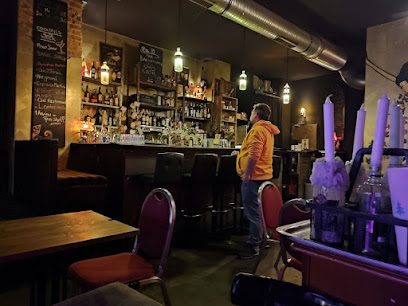
LIMONADIER Cocktailbar
Discover LIMONADIER Cocktailbar, where innovative cocktails and a vibrant atmosphere collide in the heart of Berlin's nightlife.
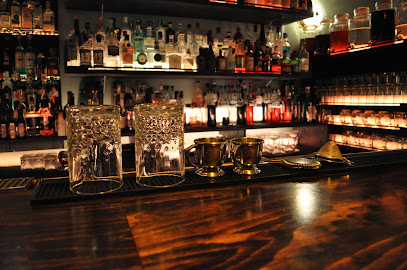
Lerchen&Eulen
Discover the cozy charm of Lerchen&Eulen, a beloved bar in Berlin's Friedrichshain-Kreuzberg, offering delightful cocktails and a vibrant ambiance.
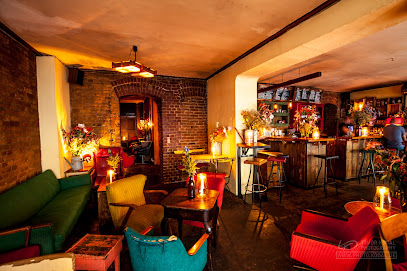
Destille Kreuzberg
Discover the heart of Berlin's nightlife at Destille Kreuzberg, a lively pub offering an extensive drink menu and vibrant atmosphere.
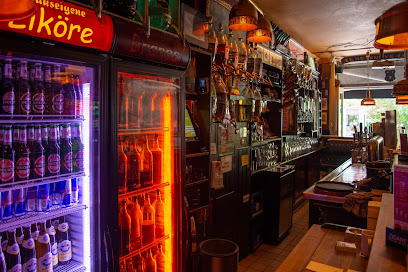
Bei Schlawinchen - Berlin
Discover the eclectic pub and restaurant experience at Bei Schlawinchen in Berlin's vibrant Friedrichshain-Kreuzberg district, where delicious cuisine meets a lively atmosphere.

Schwarze Traube
Discover Schwarze Traube, Berlin's charming cocktail bar in Friedrichshain-Kreuzberg, known for its innovative drinks and vibrant atmosphere.
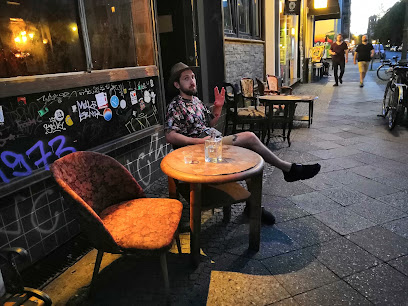
The Pharmacy Bar
Discover The Pharmacy Bar in Berlin: A cocktail lover's paradise with a unique pharmacy twist, offering innovative drinks in a chic lounge atmosphere.
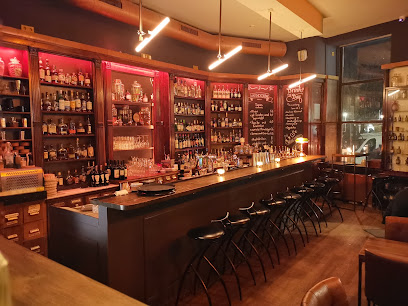
Kirk Bar
Discover the vibrant nightlife at Kirk Bar, a beloved Berlin destination for unique cocktails and an inviting atmosphere.
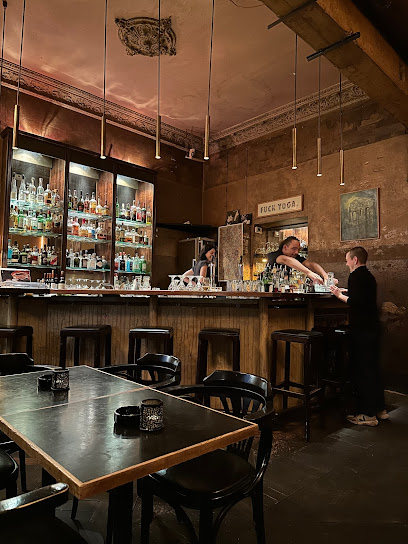
Oranienberger
Experience the vibrant nightlife and culinary delights at Oranienberger, a unique bar and restaurant in Berlin's trendy district.

Local Phrases
-
- HelloHallo
[ha-lo] - GoodbyeAuf Wiedersehen
[auf vee-der-sehn] - YesJa
[ya] - NoNein
[nine] - Please/You're welcomeBitte
[bi-te] - Thank youDanke
[dahn-ke] - Excuse me/SorryEntschuldigung
[ent-shool-di-gung] - How are you?Wie geht es dir?
[vee geht es deer?] - Fine. And you?Gut. Und dir?
[goot. oont deer?] - Do you speak English?Sprichst du Englisch?
[shprikhst doo eng-lish?] - I don't understandIch verstehe nicht
[ikh fer-shtay-e nikht]
- HelloHallo
-
- I'd like to see the menu, pleaseIch möchte bitte die Speisekarte sehen
[ikh mehrkhte bi-te dee shpi-ze-kahr-te zay-en] - I don't eat meatIch esse kein Fleisch
[ikh es-se kine fli-sh] - Cheers!Prost!
[prost] - I would like to pay, pleaseIch möchte bitte zahlen
[ikh mehrkhte bi-te tsah-len]
- I'd like to see the menu, pleaseIch möchte bitte die Speisekarte sehen
-
- Help!Hilfe!
[hil-fe] - Go away!Geh weg!
[gey vehg] - Call the Police!Ruf die Polizei!
[roof dee po-lee-tsai] - Call a doctor!Ruf einen Arzt!
[roof i-nen ahrts] - I'm lostIch habe mich verirrt
[ikh hah-be mish feh-rit] - I'm illIch bin krank
[ikh been krank]
- Help!Hilfe!
-
- I'd like to buy...Ich möchte kaufen...
[ikh mehrkhte kow-fen] - I'm just lookingIch schaue nur
[ikh shau-e noor] - How much is it?Wie viel kostet das?
[vee feel kos-tet das] - That's too expensiveDas ist zu teuer
[das ist tso too-er] - Can you lower the price?Kannst du den Preis senken?
[kahnst doo den prees zen-ken]
- I'd like to buy...Ich möchte kaufen...
-
- What time is it?Wie spät ist es?
[vee spet ist es] - It's one o'clockEs ist ein Uhr
[es ist iyn oor] - Half past (10)Halb zehn
[halb tsayn] - MorningMorgen
[mohr-ghen] - AfternoonNachmittag
[nahkh-mit-tahg] - EveningAbend
[ah-bent] - YesterdayGestern
[gey-stern] - TodayHeute
[hoi-te] - TomorrowMorgen
[mohr-ghen] - 1Eins
[iyns] - 2Zwei
[tsvai] - 3Drei
[dray] - 4Vier
[feer] - 5Fünf
[fuhnf] - 6Sechs
[zeks] - 7Sieben
[zee-ben] - 8Acht
[ahkt] - 9Neun
[noyn] - 10Zehn
[tsayn]
- What time is it?Wie spät ist es?
-
- Where's a/the...?Wo ist ein/der...?
[vo ist iyn/dehr] - What's the address?Wie lautet die Adresse?
[vee lau-tet dee ah-dreh-suh] - Can you show me (on the map)?Kannst du mir das zeigen (auf der Karte)?
[kahnst doo meer das tsee-gen (owf dehr kar-te)] - When's the next (bus)?Wann kommt der nächste (Bus)?
[vahn komt dehr nikh-ste (boos)] - A ticket (to ....)Eine Fahrkarte (nach ...)
[i-ne fahr-kahr-te (nakh)]
- Where's a/the...?Wo ist ein/der...?
History of Kreuzberg
-
Kreuzberg's transformation began in the 19th century when it became an industrial hub. The construction of the Landwehr Canal in the 1850s facilitated transport and trade, attracting factories and workers. This rapid industrial growth led to a population boom, with many immigrants settling in the area, contributing to its diverse cultural fabric.
-
Originally part of the larger Berlin area, Kreuzberg was designated as an independent district in 1920 during the Greater Berlin Act. This consolidation brought together various neighborhoods, including the working-class communities that characterized Kreuzberg. The district quickly became known for its vibrant culture and progressive politics.
-
Kreuzberg experienced significant destruction during World War II, with many buildings and structures damaged or destroyed. Post-war reconstruction efforts reshaped the neighborhood, while the division of Berlin in 1949 placed Kreuzberg in West Berlin, leading to a unique blend of cultures and ideologies that influenced its development in the following decades.
-
In the 1980s, Kreuzberg became the epicenter of the squatter movement in West Berlin. Activists occupied abandoned buildings, advocating for alternative living arrangements and social rights. This period was marked by a strong counterculture, with street art, music, and political activism flourishing, setting the stage for Kreuzberg's reputation as a hub for artistic expression.
-
The fall of the Berlin Wall in 1989 led to a wave of gentrification in Kreuzberg, as artists and young professionals were drawn to the area for its affordable housing and vibrant culture. This influx brought both revitalization and tension, as long-time residents faced rising rents and changes to the neighborhood's identity, sparking debates about cultural preservation and community.
-
Today, Kreuzberg is recognized for its multicultural atmosphere, with a rich tapestry of Turkish, Arab, and other immigrant communities. The neighborhood hosts numerous cultural events, markets, and festivals, reflecting its diverse heritage. Kreuzberg's culinary scene, street art, and nightlife continue to attract visitors, making it a dynamic and essential part of Berlin's cultural landscape.
Kreuzberg Essentials
-
Kreuzberg is well-connected to the rest of Berlin via public transportation. From Berlin Hauptbahnhof (the main train station), you can take the S-Bahn (S3, S5, S7, or S9) to either the Warschauer Straße or Ostbahnhof stations. Alternatively, take the U-Bahn (U1 or U8) to various stops in Kreuzberg. If you are arriving from Berlin Tegel Airport, you can take the TXL bus to the Hauptbahnhof and then follow the instructions above. From Schönefeld Airport, take the S9 or RE7 train towards the city center and transfer to the U-Bahn or S-Bahn as needed.
-
Kreuzberg is easily navigable by public transport, including U-Bahn, S-Bahn, and buses. The U-Bahn lines U1 and U8 run through the neighborhood, with stops at key locations like Kottbusser Tor and Görlitzer Bahnhof. Bicycles are a popular mode of transport; many bike rental shops are available, and the area is relatively bike-friendly. Walking is also a great way to explore the artistic streets and vibrant culture of Kreuzberg.
-
Kreuzberg is generally safe for tourists, but it's essential to stay aware of your surroundings, especially at night. Areas around Kottbusser Tor and certain parts of Görlitzer Park have reported higher crime rates, including pickpocketing and drug-related issues. Avoid empty streets late at night and keep your belongings secure. Always trust your instincts and if something feels off, move to a more populated area.
-
In case of an emergency, dial 112 for medical assistance and 110 for police. It's advisable to have travel insurance that covers emergencies. The nearest hospital is the Vivantes Klinikum in Kreuzberg. For minor health issues, there are pharmacies throughout the neighborhood where you can purchase over-the-counter medications.
-
Fashion: Do embrace a casual and eclectic style, which is popular in Kreuzberg. Avoid overly formal attire, as it may stand out. Religion: Do respect local customs; while Kreuzberg is diverse, churches and mosques should still be approached respectfully. Public Transport: Do validate your ticket before boarding and give up your seat for the elderly. Don't engage in loud conversations or eat on public transport. Greetings: Do greet people with a friendly 'Hallo' or 'Guten Tag.' Don’t be overly familiar unless invited. Eating & Drinking: Do try local street food, especially at markets. Don't drink alcohol in public places unless permitted, as it can attract unwanted attention.
-
To experience Kreuzberg like a local, explore the Turkish market on Maybachufer for fresh produce and authentic Middle Eastern cuisine. It’s also worth visiting the many independent galleries and street art locations. Enjoy a picnic at Tempelhofer Feld, a former airport turned park, where locals gather to relax and socialize. Attend local events or festivals, especially in the summer, to immerse yourself in the community's vibrant culture.
Nearby Cities to Kreuzberg
-
Things To Do in Potsdam
-
Things To Do in Szczecin
-
Things To Do in Leipzig
-
Things To Do in Dresden
-
Things To Do in Rostock
-
Things To Do in Erfurt
-
Things To Do in Lubeck
-
Things To Do in Poznan
-
Things To Do in Hannover
-
Things To Do in Karlovy Vary
-
Things To Do in Hamburg
-
Things To Do in Prague
-
Things To Do in Wroclaw
-
Things To Do in Hradec Králové
-
Things To Do in Plzeň













